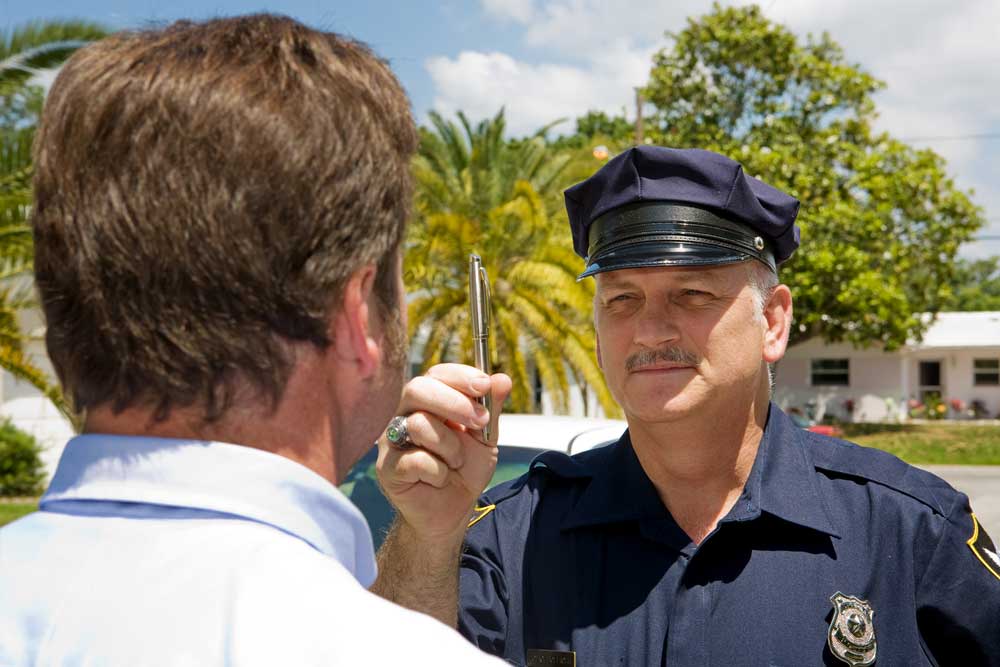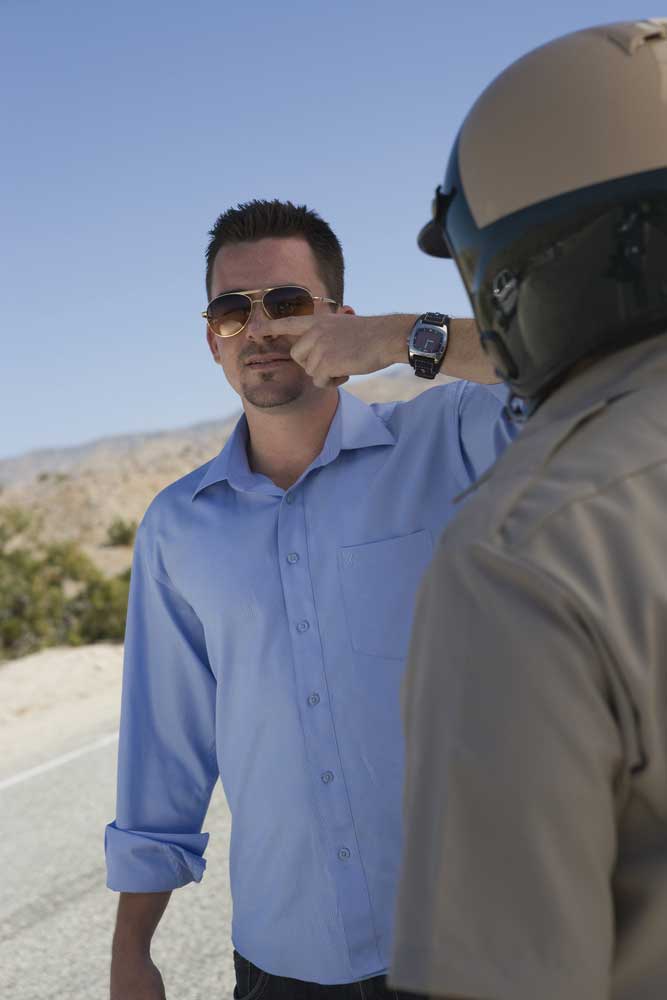As licensed drivers, we have a responsibility to exercise smart driving behavior so as to protect ourselves, our passengers, and the other travelers with whom we share the road. Law enforcement officials are responsible for monitoring our driving behavior, ensuring that we follow the legal parameters established to keep our roadways safe.
Drunk drivers are one of the biggest dangers we face on the road. Alcohol dramatically decreases reaction time and impairs judgment, which creates a very dangerous situation for drivers. The CDC estimates that in the United States, 28 people per day are killed in car accidents that involve an intoxicated driver. This staggering statistic makes it easy to understand why law enforcement treats driving while intoxicated as such a serious criminal offense and why they do everything they can to identify drunk drivers before they have an opportunity to cause harm.
Field Sobriety Tests
Field sobriety tests are one of the most common tools law enforcement officials use to identify drunk drivers. Field sobriety tests are simple exercises a police officer may ask a driver to perform in order to judge whether or not the driver is intoxicated. Note that before an officer can ask that a driver submit to these tests, he or she must have probable cause to pull a driver off the road (such as consistent swerving in an out of traffic lanes or starting/stopping abruptly).
Keep reading to get a quick inside look at the primary exercises Missouri law enforcement uses to evaluate intoxication, courtesy of our criminal defense attorneys in Eldon MO.
Walk & Turn
This is one of the most famous field sobriety tests. The officer will present the driver with specific instructions to walk heel-to-toe in a straight line for a total of nine steps. While he walks, he is to keep his arms and hands held close to his sides and count his steps out loud. Once he completes the nine steps, he is to use small steps to turn 180 degrees to the left, and then walk nine steps back to the original starting point in the same fashion. The officer will be watching for signs of intoxication such as failing to walk in a straight line, waving his arms for balance, turning in the wrong direction, or otherwise failing to follow the directions.
One Leg Stand
In this common field sobriety test, the officer instructs the driver to stand up straight with his heels together, feet pointed at a 45-degree angle. The driver is then told to raise one foot approximately six inches off of the ground, keeping his foot level and toe pointed outward, and keep his eyes on his raised foot while counting out loud until instructed to stop. The officer will be watching for the driver to slur his speech, lose count, struggle to maintain balance, or otherwise fail to perform the exercise correctly.
Horizontal Gaze Nystagmus (HGN)
This is the most reliable field sobriety tests an officer has at his disposal. The officer will ask the driver to stand on the side of the road and lock his gaze on the officer’s finger of a pen that is held directly in front of the driver’s nose. The driver is then directed to follow the finger or pen with his gaze while the officer slowly moves the object to the right and to the left in a specific pattern. The officer will watch the driver’s eyes closely throughout the process. If the driver is intoxicated, his eyes will not be able to follow a smooth trajectory – they will likely twitch, jerk, or tremble as they slide from side to side.
Other Field Sobriety Tests
The Walk & Turn, One Leg Stand, and Horizontal Gaze Nystagmus are the three officially standardized (and therefore the three most common) field sobriety tests, but they aren’t the only ones that officers may use. Examples of other field sobriety tests include asking the driver to count backwards from a specific number, tilt his head back with his eyes closed and estimate how long it takes for 30 seconds to pass, or recite the alphabet.
The officer may also ask the driver to perform the well-known Finger To Nose test, where the driver is instructed to hold both his arms outstretched to his sides, parallel to the ground. When directed, the driver is supposed to bring either his left or his right finger to the tip of his nose.
The Purpose Of Field Sobriety Tests
No matter what type of field sobriety test an officer chooses to use, the primary purpose will be to test the driver’s ability to follow instructions and perform the tasks correctly. The subtle multitasking required by the tests is specifically designed to be simple for any sober person to perform, but challenging or impossible for an intoxicated individual to perform correctly.
If a driver fails any of the field sobriety tests, the officer may arrest the driver under suspicion of drunk driving.
Contact Us For Representation
Driving while intoxicated is a serious criminal offense, and it is important that it be recognized and treated as such. If you are facing charges, we strongly encourage you to schedule a consultation with an experienced DWI attorney at the Lake of the Ozarks immediately.
If you are looking for a DWI defense attorney in Mid-Missouri, visit www.DeputyAndMizell.com.
Contact Deputy & Mizell, LLC
Lebanon: 417-532-2191 Facebook
Camdenton: 573-346-9990 Twitter
Tuscumbia: 573-369-0001 Google+
www.DeputyandMizell.com LinkedIn





